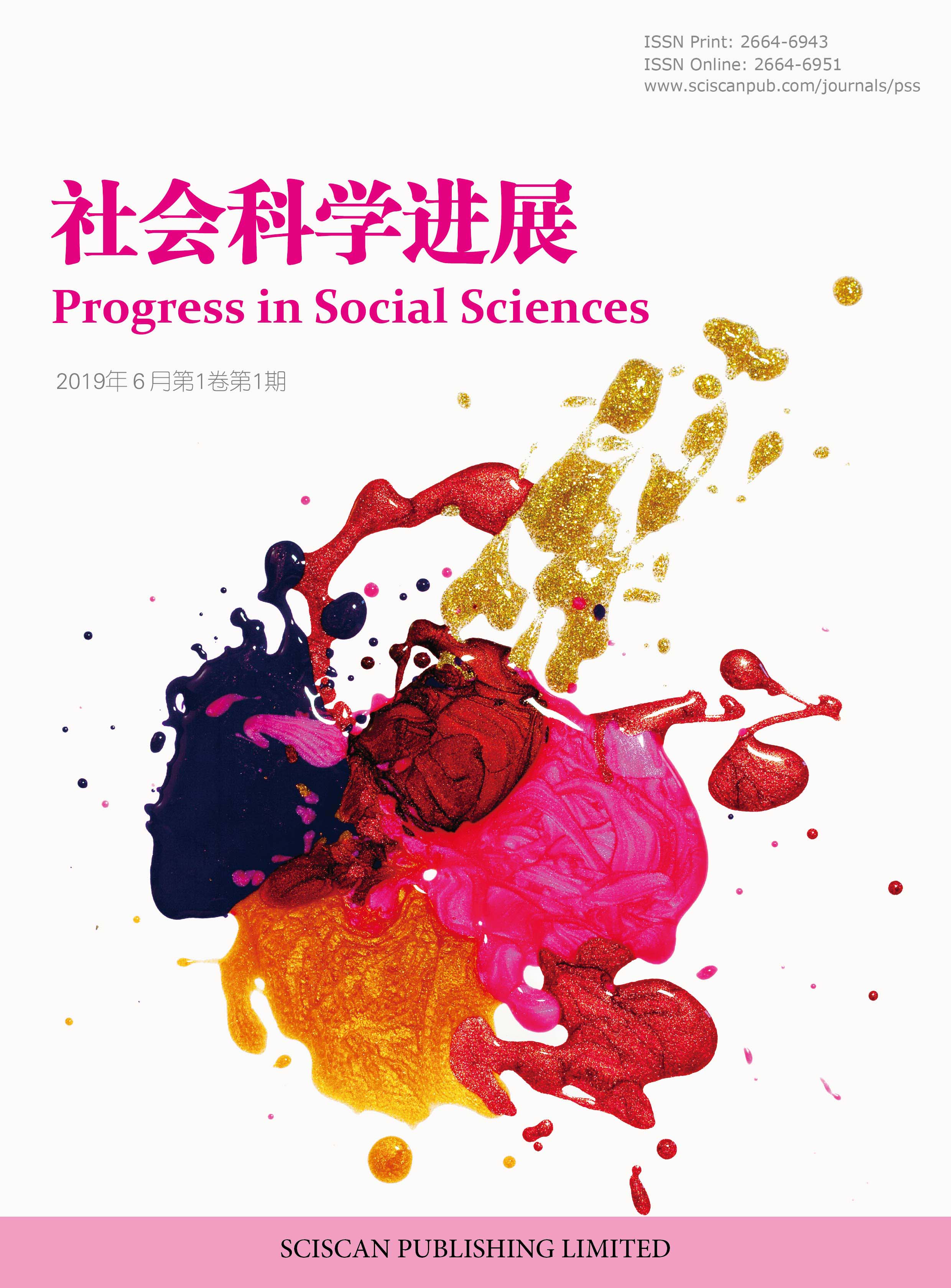Progress in Social Sciences
江户时代“物”的中日交流——从全球史的视角
Material Exchange Between China and Japan in the Edo Period: A Global History Perspective
- Authors: 张卫俊 陆薇薇
-
Information:
东南大学外国语学院,南京
-
Keywords:
Edo period; Global history; Material culture; Early globalization; Modernization江户时代; 全球史; 物质文化; 早期全球化; 现代化
- Abstract: From the perspective of the global history of material culture, this paper examines the material and cultural exchanges between China and Japan during the Edo period, using silver, sugar, and bencao (pharmacopoeia) as representative case studies. Silver reflects the restructuring of East Asia’s economic and trade networks; sugar demonstrates the transregional circulation of technologies, particularly in sugar production; and bencao exemplifies intellectual exchange and the mutual efforts of both countries in constructing their knowledge systems. The circulation of “things” between China and Japan during this period reveals that, even under restrictive policies, both nations actively engaged in the global material cycle through selective exchange, maintaining autonomy while adapting to global dynamics. This study highlights the endogenous logic and diversified trajectories of East Asian modernization. By approaching Sino-Japanese cultural exchange through the global history of materiality, the paper challenges Eurocentric narratives such as “modernization equals Westernization” and reconsiders the unique potential of East Asian paths to modernity. 本文从物的全球史视角出发,以白银、砂糖和本草为案例,探讨了江户时代中日两国之间的物质文化交流。白银见证了江户时代东亚地区经贸格局的重构;砂糖反映了东亚地区以制糖技术为代表的工艺和技术知识的流动;本草则体现出思想层面的交流,凝聚着中日两国构建自身知识思想体系的努力。江户时代中日两国之间“物”的流动,反映了两国在早期全球化浪潮中,通过“选择性的交流”,在维护自身的主体性和独立性的同时参与到全球物质循环中,从而展示出东亚现代化进程的内生逻辑与多样路径。从物的全球史角度切入考察江户时代中日文化交流,有助于破除“现代化等于西方化”的欧洲中心主义叙事,重新理解东亚地区现代化发展的可能性与独特性。
- DOI: https://doi.org/10.35534/pss.0706082
- Cite: 张卫俊,陆薇薇.江户时代“物”的中日交流——从全球史的视角[J].社会科学进展,2025,7(6):482-487.
“物”作为人类生产与智慧的结晶,是理解历史进程的重要线索。以“物”为抓手,深入剖析和挖掘物质文化(Material Culture),为我们还原历史事实,审视和反思固有的历史认知提供了新的视角。近年来,西方“新文化史”研究的兴起,推动学界从以人或国家为中心的叙事向日常生活、物质与技术等“非人主体”的维度拓展。特别是在全球化视野下,“物”的全球流通不仅承载经济意义,更是文化、技术、权力与生态交织的复杂过程[1]。
自20世纪70年代社会史革命以来,全球史的兴起成为历史学科中最重要的发展之一,人们开始尝试突破以往以民族国家为中心的线性历史书写,强调不同区域间的互动、关联和重构[2]。而“物”正是串联起不同地域、见证全球化演进的重要载体。特别是在江户时代,中日两国虽相继实行不同程度的“锁国”政策,对外交往方针逐渐倾向保守,却依然参与到全球物质循环体系中,“唐物”与“南蛮货”大量流通,呈现出“选择性开放”的特点。
本文以白银、砂糖与本草三个典型之“物”为分析对象,从流通路径、技术转移与思想演化三个层面展开研究,考察其在江户时代中日两国之间的流动过程及其文明意义,从而揭示东亚地区现代化发展的内生动力与路径选择。
1 全球化视野下江户时代的中国和日本
1.1 江户时代中国和日本的社会风貌
江户时代从 1603 年德川家康在江户设立幕府开始,至1868年结束,历时265年,大致对应中国的明末清初至晚清时期。这一时期,中国与日本均处于传统小农经济的巅峰阶段,政治体制日趋稳定,文化繁荣发展,同时也逐步融入早期全球市场体系中。
中国在小农经济发展的基础上,商品经济迅速扩张,市镇经济崛起,形成了北京、南京、苏州、杭州等商业中心,丝绸、瓷器、茶叶等商品通过“海上丝绸之路”远销海外。在日本,农村社会以“本百姓”自耕农为主体,其承担年贡与劳役,构成封建赋役体系的基础。在此制度框架下,农业与手工业均获得显著发展,区域间物产流通日益活跃。[3]。江户、大阪、京都等城市成长为全国政治经济文化中心。商品经济的繁荣,为两国参与国际贸易奠定了坚实基础。
1.2 新航路开辟后东亚地区政经格局的变动
新航路开辟后,葡萄牙、西班牙、荷兰、英国等国陆续开辟海上航线,深入到东亚地区,逐步构建起以东南亚为中枢的海上殖民网络。西方列强为东亚地区带来了新的贸易模式,推动了新作物在东亚地区的推广,白银大量流入中国。明清之际原产于美洲的玉米、红薯、土豆等新作物被引入中国,促进了中国粮食产量的提高,减少了小农对地主的人身依附;产于日本和美洲的白银成为国际结算货币,促进了商品流通,也推动了东亚地区商品经济的发展[4]。
伴随着新航路开辟,西方科学技术、文艺作品和宗教知识也传入东亚地区,形成“西学东渐”的文化现象。与此同时,西方传教士及其知识体系进入东亚,引发中日两国对天主教及其政治潜势的警惕,推动“禁教—锁国”政策出台。
1.3 “锁国”政策与有限交往机制
日本的锁国体制大致形成于17世纪。与西方国家的接触和贸易一方面带来了巨额收益,另一方面也导致天主教在日本势力扩大,给作为封建统治者和佛教净土宗信徒的德川幕府带来威胁[3]。德川幕府自1633年起实行系列锁国令,最终确立以长崎为唯一对外通商口岸、限制对象仅为中国与荷兰的“准封闭”制度。其背后动因既包括防范西方宗教文化渗透,也体现了对对外贸易管理与税收垄断的制度化需求。
中国自明朝中晚期以来亦实行海禁政策,限制民间海外贸易。清初为应对反清势力与防范外敌,也沿袭海禁体制,至乾隆帝时最终形成以广州“一口通商”为代表的高度集中型对外贸易模式。
尽管“锁国”与“海禁”政策在传统叙事中被视作封闭落后象征,但从“选择性交往”的视角出发,这些政策实质上构建起一套“可控的开放”秩序,使中日两国能够在最大限度维护统治稳定的同时,仍然参与全球市场体系。这为“物”的全球流动提供了制度保障,也揭示了“锁国”背后的柔性调整与弹性机制。
2 江户时代中日物质文化交流典型案例
在早期全球化的浪潮中,中日两国一方面扩大了与西方国家在经济文化层面的接触,另一方面又出于维护国内秩序的需要,逐步加强了对对外交流的限制。然而,两国并未与外部世界完全隔绝,全球范围内的“物”的流通仍在持续发生。以下将以白银、砂糖与本草三个典型案例为例,探讨江户时代中日之间物质文化交流的具体表现及其历史意涵。
2.1 白银:区域经济整合与“三角贸易”的驱动力
白银作为人类社会生活的重要组成部分,历史上曾在许多地区作为货币流通,随后逐渐突破区域经济,作为主要的国际商品支持了全球的远程贸易。在国际金本位制建立前特别是欧洲各国进军非洲、亚洲、南北美洲的“大航海时代”,白银作为国际交易结算货币被广泛使用[5,6]。
白银在江户时代不仅是中日贸易的重要商品,更是连接中国、日本与东南亚及西方列强之间的核心经济媒介。在中国宋代、元代和明代大部分时期,银和铜由中国流向日本,16世纪开始,东亚地区金属货币的供应关系出现逆转,日本成为白银出口国。同时参与到中国与欧洲国家白银贸易的体系之中[7]。
这一变化与中国国内局势与世界经贸格局变化密切相关。明朝政府未能承袭宋元时期相对科学的纸钞管理和调控制度,导致大明宝钞体系崩坏,市场对白银的需求增多;明朝中叶起随着商品经济的发展,以及赋役折银的“一条鞭法”改革,致使白银需求进一步扩大,白银货币化程度进一步提升[8]。新航路开辟后,欧洲国家在美洲新大陆陆续发现银矿,促使美洲白银开始进入世界市场,以葡萄牙、西班牙为首的欧洲国家进入以中国为中心的东亚贸易体系,以白银作为支付手段交换产自中国的原材料和手工业制成品。新大陆发现后,大量的白银先是流入欧洲,随后流向亚洲、进入中国,16世纪中期到17世纪中期流入中国的白银总量占世界白银产量的近四分之一到三分之一[7]。
在江户时代初期,日本的白银生产一度达到高峰,石见、生野和阿仁等矿山被陆续开发,形成了较为集中和高产的矿业体系。据推算,从1560年到1600年,日本每年生产和供应50吨白银,从1600年到1640年,每年生产和供应150~190吨,最高峰的1603年达到200吨,这80年间日本成为当时世界主要白银生产国和出口国[7]。随后的锁国时期,日本通过“唐船”向中国输出大量白银,占出口总额的70% 以上[9]。
新航路开辟后,葡萄牙攻占了印度西海岸港口城市果阿,控制了临近地区的航线,逐渐深入东南亚、东亚地区,建立了“果阿——马六甲——澳门——长崎航线”,“南蛮贸易”由此兴起[10]。其中,白银是日本的出口支柱,在“中国、日本、东南亚(西方列强)”的三角贸易中扮演了重要角色。日本实行锁国政策后,限制与外国的贸易往来,但中国的商船仍然可以在日本的长崎等地进行贸易。中国的商船将丝绸、茶叶、瓷器等商品运往日本,日本则将白银等商品运往中国,这种贸易方式促进了两国之间的经济发展。
进入江户时代中后期,日本国内白银产量逐渐下滑,至17世纪末,随着石见银山资源枯竭,年产量降至约50吨[9]。同时,大量美洲白银经菲律宾流入中国,削弱了日本白银的竞争力,迫使幕府调整贸易政策,日本对外贸易逐渐转向其他商品。
白银的流通不仅改变了东亚区域贸易结构,也推动了东亚内部财政体系与产业结构的转型。在日本,白银收入支撑了幕府的财政稳定;在中国,白银输入促进了税制改革,推动市场经济发展。白银奠定了早期全球化中日本的独特地位,见证了中日之间的商贸交流和早期全球经济日趋紧密的联系。
2.2 砂糖:技术转移与消费文化的互动
砂糖在江户时代不仅是中日贸易的重要商品之一,也成为技术传播与文化认知转化的关键载体。明清时期,中国福建、广东等地已掌握成熟的制糖工艺,所产红糖、白糖通过海上贸易大量出口至日本。江户时代初期,日本本土缺乏甘蔗种植条件,砂糖完全依赖进口。砂糖在日本一度被认为具有“止咳、消痰”等功效并作为药物使用,又广泛用于糕点、味噌等食品制作,其需求快速上升。[11]因此,砂糖成为中日贸易的核心商品,糖类也凭借着巨大而稳定的输出量超越生丝和丝织品成为中国对日输出的最大宗货物[12]。
在“锁国”背景下,日本通过长崎与琉球两个渠道持续获得中国砂糖。中国商人多通过“唐人屋敷”制度,在长崎进行砂糖贸易。中国商船抵达长崎,将所载砂糖通过幕府指定的“唐人屋敷”进行交易,幕府通过“丝割符”制度间接控制砂糖价格,并征收高额关税[13]。萨摩藩在1609年征服琉球后,垄断了琉球的砂糖贸易。琉球通过朝贡贸易从中国获取砂糖,再转售日本,从而绕开了幕府的严格限制,成为中日贸易的“灰色中介”,形成制度缝隙下的贸易通道。例如,17世纪琉球年输出砂糖约100万斤,其中80%经萨摩藩流入日本市场,从而规避了幕府锁国政策的限制[11]。由此,中日两国的砂糖贸易形成了长崎与琉球双轨流通的局面。
为减少对中国砂糖的依赖,日本开始积极引进制糖技术。1725年,去往日本的中国商人给日本带去了蔗种、甘蔗种植方法和砂糖制造方法,日本开始在本土种植甘蔗,制造蔗糖[14]。德川幕府八代将军吉宗大力奖励甘蔗种植,甘蔗种植拓展到了今天的四国、中国和近畿地区[15]。奄美大岛和琉球最早制造砂糖成功,萨摩藩成为日本最大的砂糖产地[16]。砂糖国产化推动了日本农业和手工业的发展,同时甘蔗种植也带动了四国、九州地区的土地开垦,催生出地方特色砂糖产品。此外,砂糖消费还刺激了和果子的普及,形成了独具特色的庶民饮食文化。
江户时代的中日两国砂糖贸易不仅是贸易活动,更是技术引进、制度适配与消费文化演进为一体的复合过程,体现了物质文化转化中的“接受—再造”机制。日本通过引进中国技术实现了砂糖自给,而中国则凭借生产优势主导了东亚市场。这一过程也揭示了早期全球化进程中区域经济的相互依存,以及技术转移对产业转型的关键作用。江户时代结束后,日本通过明治维新走上强国之路,便开始殖民中国台湾进一步扩张砂糖产业,但这一行为根源仍可追溯至早期全球化时代的砂糖市场开拓和技术转移[12]。
2.3 本草:知识体系的迁移与本土化
本草学是传统中医学的重要组成部分,是一门研究天然物产,特别是药用动植物等的学科,也是江户时代思想交流的代表领域。中国自《神农本草经》以来,本草典籍体系逐渐完善,至明代李时珍《本草纲目》集大成。在江户时代初期,《本草纲目》传入日本,迅速受到幕府与知识阶层重视,成为医学与博物学研究的重要文献。
1603年,江西本《本草纲目》刚刊行不久,日本学者林罗山从商埠长崎得到一套《本草纲目》,并把它献给德川家康,奉为“神君御前本”。1637年京都出版《本草纲目》日本最早的刻本,并在中文汉字旁用日文片假名标音。《本草纲目》传入日本后产生了深远影响,被日本医学界奉为经典,许多日本学者对其进行翻刻、注释和研究,通过家族教学和师徒传承的方式研究和教授《本草纲目》,如贝原益轩、冈本一抱、松冈玄达、小野兰山、岩崎灌园、前田利保等[17]。
《本草纲目》的传播极大地促进了日本本草学、药物学、博物学、化学的发展,为中国本草学的“日本化”提供了沃土。例如,贝原益轩是江户时代著名的儒医,他参考《本草纲目》等众多中国本草学著作,结合了日本本土的物产知识和中国本草学理论,撰写了《大和本草》,在日本本草学史上占有重要地位[18]。除《本草纲目》外,《神农本草经》《证类本草》等中国古代本草学著作也在日本流传,为日本本草学提供了丰富的理论基础,并推动了日本本草学从对中国知识的简单模仿向具有本土特色的方向发展。
此外,中日之间的药材贸易也进一步加深了本草学的互动。中国药材如人参、当归、黄芪等通过长崎输入日本,成为日本传统医学的重要资源。同时,日本也少量输出本土药材至中国沿海,形成有限但双向的药材流通网络。
本草学的传播跨越了物质与精神之间的界限,代表了东亚知识体系之间的深层互动。在西方自然科学知识大规模传入前,源自中国的本草学为日本提供了系统认知自然与人体的理论支撑,推动了医学、药学与博物分类学的发展。本草学不仅是中日物质交流的结晶,更是思想层面融合的产物,预示着现代知识体系的转型契机。
3 物质文化视角下中日交流的历史意义
3.1 “三角贸易”的形成:江户时代东亚经贸格局的重构
如前文所述,在西方列强逐步深入东亚的背景下,中日两国虽实行不同程度的“锁国”政策,但依然未与全球市场脱节,共同见证了东亚地区经贸格局的深刻演变。具体而言,传统的双边贸易关系逐渐被更加复杂的区域性与全球性贸易网络所取代,其中最具代表性的现象即为中国、日本与西方列强(特别是西方列强在东南亚地区的殖民据点)的“三角贸易”这一新贸易格局的形成。
以白银为例,中国在商品经济发展和“一条鞭法”等制度改革推动下对白银的需求显著上升,而日本则在矿产资源开发的背景下成为全球主要的白银输出国。由于明朝“海禁”与清初政策的变化,中国对外贸易的渠道逐渐转移至东南亚地区,尤其是荷兰、葡萄牙等殖民者控制的港口城市,如巴达维亚(今雅加达)与马六甲。日本白银经由长崎、再通过东南亚中转至中国,形成“日本输出白银——东南亚转口——中国进口商品”的新的贸易路径。这一贸易路径并非简单的中转或替代,而是在多重经济与政治力量交错中构建出的区域性全球化新模式。宋念申在《发现东亚》中指出,17世纪后期的东亚并非是西方单方面渗透的对象,而是自身具备高度复杂性与应对机制的主体[19]。
砂糖的流通进一步丰富了这一格局。江户初期,日本大量依赖中国砂糖进口,并通过琉球与长崎两个渠道维持供给。随着制糖技术从中国传入,日本推进甘蔗种植和本地制糖,逐步实现国产化。这一转变不仅体现贸易模式的演变,也体现了技术转移与本地化的协同效应。
综上所述,中日两国围绕白银、砂糖等“物”所形成的区域流通网络,构建起一种“在地逻辑”下嵌入全球体系的贸易与技术交流互动机制,展现出东亚国家在全球早期互联格局中的制度自主性与文化能动性。在全球史的视角下,这一贸易格局反映了中日两国在早期全球化的浪潮中并非是西方主导的世界经济体系的附庸,而是以东亚世界的自身逻辑主动参与到世界物质大循环中。
3.2 “锁国”政策的再审视:开放与封闭之间的流动性
传统观点往往将“锁国”视为封闭保守的象征,将其与东亚国家“错失现代化”直接关联。然而,从全球史与物质文化流动的角度看,中日两国“锁国”政策实则体现了国家层面对外交流的主动选择与结构性调控,而非消极自闭。
从物质流通层面来看,“锁国”并未真正阻断中国和日本与世界的联系。例如,幕府对长崎口岸的管理呈现出一种有序且精密的“有限开放”,限定了通商场所和对象,通过各种方式确保贸易在带来经济利益的同时不危及幕府统治的基础。
这种“有限开放”在砂糖与制糖技术的交流中也有所体现,诸如琉球等“制度缝隙”成为中日之间重要的贸易中介,在官方限制与现实需求之间提供灵活操作空间。幕府虽限制对外接触,但对涉及实用技术的传播持相对宽容态度,尤其是对经济发展有积极作用的工艺和技术知识,体现了“锁国”政策下的“选择性开放”。正如宋念申在《发现东亚》中指出,“‘锁国’并不意味着断绝,而是对流动性的重新界定。”[19]
此外,“锁国”背景下的知识传播如本草典籍的引进和本土化,不仅未被制度完全阻断,反而因政治相对稳定而获得深入发展的空间。从《本草纲目》的引入到《大和本草》的撰写,日本不仅接受了中国的知识体系,更实现本土化改造,推动了自然认知与医学体系的转型。本草学的流通反映出早期东亚地区知识迁移、融合与再创造的全过程。到了江户时代中后期,以“兰学热”为标志,西方自然科学知识传入日本,中、日、西三方知识系统在此交汇,在东亚形成新的知识融合路径。
总之,“锁国”并未阻断中日两国与世界各国的往来,而是构建起一种具有限度与方向性的交流秩序。这一秩序既回应了当时中日两国面临的国家安全、思想统一与统治稳定的现实需求,也反映出中日两国在全球物质文化交流中所具备的能动性。在全球史视野中重新审视“锁国”,有助于破除传统西方中心主义所构建的“闭关锁国导致落后”“由东洋的专制导致东亚停滞”[20,21]的叙事,展现出东亚国家自身作为历史主体的独立性和创造性。
3.3 东亚地区现代化演进的内生性:从物质文化看独立自主的现代化路径
以“物”的流动为线索,可以更清晰地观察到,中日两国在江户时代并非被动卷入全球化过程,而是以自身方式积极回应、主动参与。通过对白银、砂糖与本草三个案例的分析,本文进一步提出:东亚地区的现代化进程并非完全依赖西方输入,或单纯模仿西方模式,而是孕育于本土传统与对全球变化的能动回应之中,体现出一种“内生性现代化”的发展逻辑。换言之,中日两国在早期全球互动中,展现出探索自主且具本土特色的现代化路径的可能性与实践经验。
首先,全球范围内的“物”之流动,并不必然导致国家主体性的丧失。在白银贸易中,日本通过对矿产资源的有效开发与制度化的贸易管理,将白银输出转化为财政稳定和对外支付能力;中国则凭借白银的大量流入,推动了赋役制度的货币化改革,促进了国内商品经济的发展,展现出积极吸纳全球资源并进行制度性回应的能力。
其次,中日两国在全球“物”的流动中不仅是被动的接收者,更展现出作为知识与技术生产者的能动性。砂糖与本草的跨境流动正体现了两国在技术和知识层面引进、转化与再创造的能力。砂糖制造技术的本地化,推动了日本农业与手工业的联动发展,同时促进了地方经济结构的多样化与商品化水平的提升。本草知识的传播则不仅扩展了传统中医药理论体系的影响范围,更在日本实现了深度的本土吸收与再构建,推动其医学知识体系的在地化进程。
另外,从国家层面的制度设计来看,中日两国对全球物质文化的态度并非一味排斥,而是在独立自主和开放包容之间寻求平衡。江户幕府对外贸易采取有限度的“锁国”策略,正是基于对国内政治稳定与国际经济参与的双重考量。而清政府虽然推行“闭关锁国”政策,但在实际操作中如广州一口通商、对南洋贸易的默许等,都体现出一种有限度的开放。这些政策并非完全否定外部世界和西方势力的存在,而是在高度警惕之下实现有限接触、有限交流的应对逻辑。
最后,物质文化交流所反映出的自主性,构成对“现代化等于西方化”观点的重要修正。在西方中心主义的“中心—边缘”叙事中,非西方国家往往被描绘为被动的接受者与模仿者。然而,从江户时代的中日物质文化交流中可以看到,即使在尚未经历“明治维新”或“洋务运动”的时代,中日两国已展现出与现代性要素相契合的诸多特征。这些变动虽然与西方势力深入东亚地区密切相关,但并非全部是“西化”的结果,而主要是由自身的文化传统和发展逻辑所驱动。因此,东亚地区现代化的演进不应被理解为对西方的模仿,而应认识到中国和日本等东亚国家现代化发展的内生性。其中,物质文化既是传播载体,也是认知工具,它将看似分离、封闭的区域联系在一起,同时也展示了早期全球性浪潮中东亚地区的区域主体性、自立性。江户时代的中日物质文化交流史,不仅是一段互通有无、共同发展的经济史、技术史和思想史,更是孕育着现代化发展的变革史。
4 结论
本文从全球史与物质文化研究的视角出发,选取白银、砂糖与本草三个典型案例,探讨江户时代中日之间的物质文化交流。白银见证了东亚地区“三角贸易”的形成,反映了江户时代东亚经贸格局的重构;砂糖不仅反映了新的贸易结构,更见证了以制糖技术为代表的工艺和技术知识的流动;本草则体现出思想层面的交流,本草学的发展凝聚了中日两国构建自身知识思想体系的努力。
通过对“物”的跨国流通与在地化转化过程的剖析,可以看出,中日两国不仅在早期全球化体系中扮演着资源交换的参与者的角色,更是制度创新与文化再生产的主体,积极塑造自身的现代化发展路径。这一历史经验表明,东亚国家在全球互动中并非处于被动边缘,而是具备以自身逻辑回应全球变迁的创造力。重新审视这一进程,有助于突破“中心—边缘”式的西方中心主义叙事,发掘东亚国家在现代化演进中的多样性与自主性。
参考文献
[1] Gerritsen A,Riello G.The Global Lives of Things:The Material Culture of Connections in the Early Modern World[M].London and New York:Routledge,2016:16-23.
[2] 斯文·贝克特,多米尼克·萨克森迈尔.全球的全球史:世界各地的研究与实践[M].北京:北京大学出版社,2024.
[3] 北岛正元.江户时代[M].北京:新星出版社,2019.
[4] 罗振嘉.东亚前近代社会的形成探析——以新航路开辟的影响为视角[J].现代商贸工业.2021(15):30-31.
[5] 鎮目雅人.銀貨の歴史:激動の時代をささえた貨幣[J].東京国際コイン・コンベンション.2016(27):20-29.
[6] 滨下武志.中国、东亚与全球经济:区域和历史的视角[M].北京:社会科学文献出版社,2009.
[7] 贡德弗兰克,安德烈弗兰克.白银资本:重视经济全球化中的东方[M].成都:四川人民出版社,2017.
[8] 卢伟.明清时期海外白银流入的经济内涵探讨[J].经济资料译丛,2021(3):48-59.
[9] 中村質.近世における日本・中国・東南アジア間の三角貿易とムスリム[J].史淵,1995(132):35-63.
[10] 顾卫民.南蛮贸易时代:近代早期日本与欧洲交流史(1542—1650)[M].上海:上海社会科学院出版社,2024.
[11] 瞿亮,张承昊.砂糖产业与近代日本的南方扩张[J].世界历史,2021(5):79-95.
[12] 何宇.十七至十九世纪前期中日砂糖贸易初探[J].明清论丛,2015(1):339-345.
[13] 松浦章.近世東アジア文化交渉と中国帆船[J].東アジア文化交渉研究 別冊 = Journal of East Asian cultural interaction studies,2008(1):41-62.
[14] 周正庆.明清时期我国蔗糖外销的流向[J].广西师范大学学报( 哲学社会科学版),2004,40(2):129-132.
[15] 河添房江.唐物の文化史:舶来品からみた日本[M].日本:岩波書店,2014.
[16] 川北稔.砂糖の世界史[M].日本:岩波書店,1996.
[17] 周敏.日本江户时代主要本草学派对《本草纲目》的受容研究[J].时珍国医国药,2019,30(5):1235-1237.
[18] 劉偉婷.江戸時代における『本草綱目』の受容について―『大和本草』の考察を中心に―[J].国際文化研究,2024,5(30):43-58.
[19] 宋念申.发现东亚:2版(修订本)[M].北京:新星出版社,2024.
[20] 北村厚.グローバルヒストリー研究における西洋史の位置づけ[J].神戸学院大学人文学部杞要,2019(39):77-88.
[21] 周文,冯文韬.贸易顺差、闭关锁国与西方话语批判——基于鸦片战争的经济学再审视[J].上海经济研究,2023(2):24-35.
















